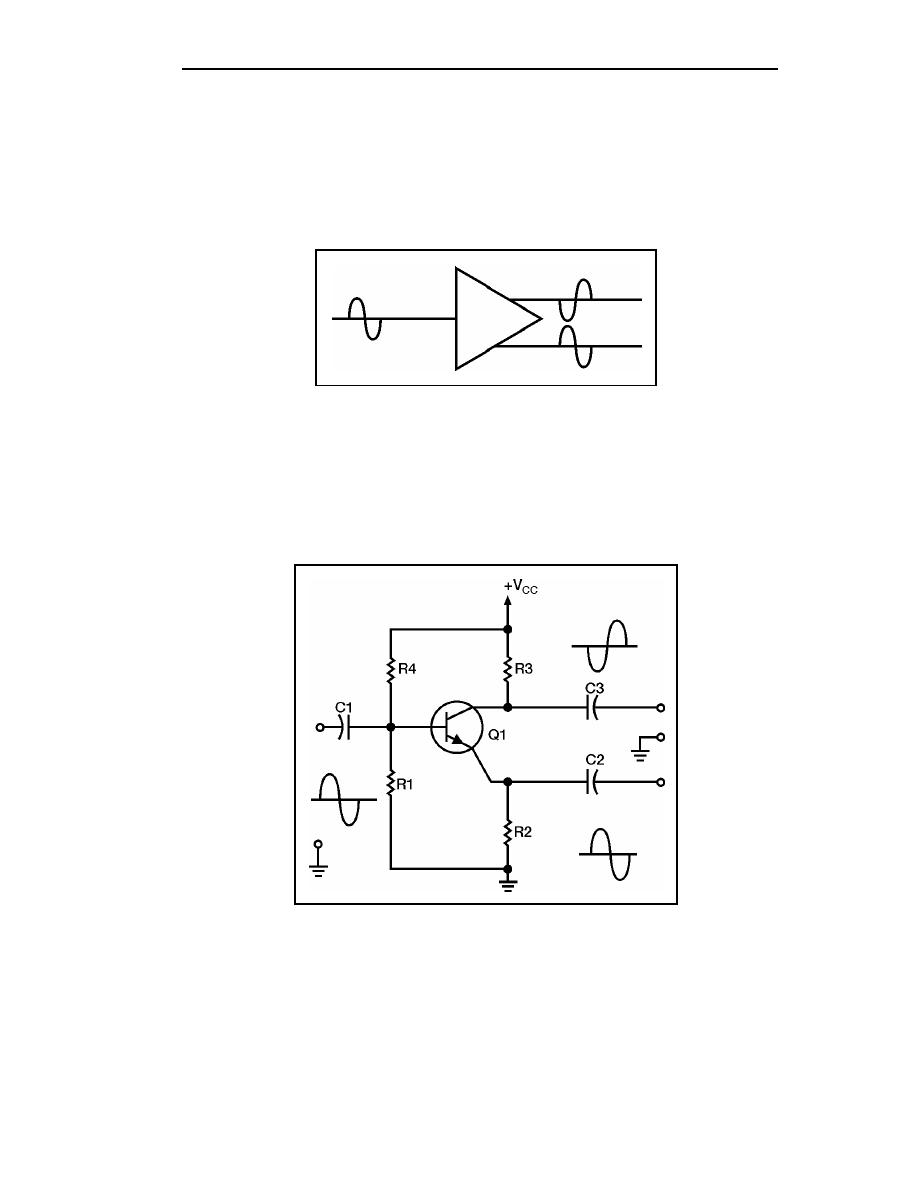
TC 9-62
PHASE SPLITTERS
5-84. Sometimes it is necessary to provide two signals that are equal in amplitude but
180 out of phase with each other. The two signals can be provided from a single-input
signal by the use of a phase splitter. A phase splitter is a device that produces two signals
that differ in phase from each other from a single-input signal. Figure 5-25 is a block
diagram of a phase splitter.
Figure 5-25. Block Diagram of a Phase Splitter
5-85. One way in which a phase splitter can be made is to use a center-tapped
transformer. Remember, when the transformer secondary winding is center-tapped, two
equal amplitude signals are produced. These signals will be 180 out of phase with each
other. So a transformer with a center-tapped secondary fulfills the definition of a phase
splitter. A transistor amplifier can also be configured to act as a phase splitter. Figure 5-26
shows one method on how this is done.
Figure 5-26. Single-stage Transistor Phase Splitter
5-86. C1 is the input signal coupling capacitor and couples the input signal to the base of
Q1. R1 develops the input signal. R2 and R3 develop the output signals. R2 and R3 are
equal resistances to provide equal amplitude output signals. C2 and C3 couple the output
signals to the next stage. R4 is used to provide proper bias for the base of Q1.
5-87. This phase splitter is actually a single transistor combining the qualities of the CE
and common-col1ector configurations. The output signals will be lower in amplitude than
5-24
TC 9-62
23 June 2005



 Previous Page
Previous Page
